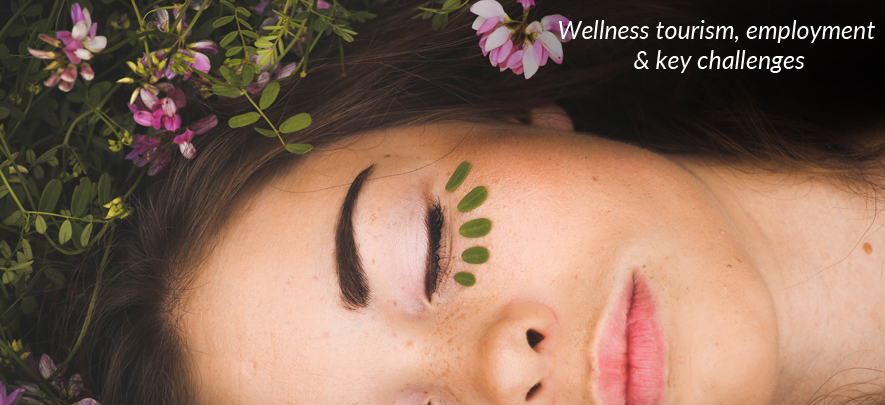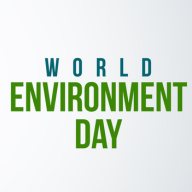Beauty and wellness industry: Tourism, employment & key challenges

සෞඛ්යය සහ ජීවන රටාව
සතියකට පෙර 281 — අවම 10 කියවීම
The last and the final in the wellness and beauty series, this article takes you through the various wellness and tourism opportunities in India, employment opportunities and some key challenges faced by this industry. In our previous article, we shared the key trends governing the wellness and beauty industry.
Excerpts from the report titled Wellness and beauty- An ecosystem in the making by Federation of Indian Chambers of Commerce and Industry (FICCI) in collaboration with Ernst & Young (EY).
India is fast becoming a hub of wellness and medical tourism driven by growing demands for services such as yoga, Ayurveda, siddha, naturopathy, spa treatments, etc. Let’s look at the wellness and tourism opportunities available in the country.
Wellness and tourism
The growth is underlined by rising customer focus towards better health and overall well-being, better infrastructure, improved technology, low cost and government support.
There is a lot of interest in the western countries about Indian system of medicine. Ayurveda and yoga has always been popular, but the potential hasn’t been tapped yet. In 2017, global wellness tourism industry was valued at US$439b, accounting for 14% of the overall tourism market. India is among the top five destinations for wellness services, along with China, the US, Brazil, and Indonesia and second largest exporter of alternative medicines (AYUSH).
Also read: Beauty and wellness industry: Industry structure and key drivers
Every year India receives a huge number of patients from foreign countries because doctors and medical services can be availed here at a cheaper price. Cosmetic procedures like lasers, Botox and skin surgeries such as facelift and nose jobs, etc. are very costly in other countries and not covered in insurance. For instance, face lift in India costs 3.75 times cheaper as compared to the US. In terms of medical tourism, India was ranked 5th in 2016 and as of July 2018, it captures 18% of the global market.
Some of the most popular destinations in India that attract foreign visitors for wellness and medical tourism are:
- Uttarakhand- Home to 62 of the total 350 hot springs in India, an ideal destination for luxury spa, yoga and meditation retreats.
- North-east region- It is expected to become a medical tourism hub in the coming years due to the presence of healthcare facilities, serenity in nature, infrastructure and biodiversity. Guwahati (Assam) is emerging as a popular destination for healthcare services due to its linguistic advantage, weather conditions and nature.
- Mumbai, Maharashtra- Ideal destination for medical treatments including cosmetic surgeries, The Maharashtra Tourism Development Corporation (MTDC) aims to promote the state as a wellness tourism hub through collaborations with the Global Vipassana Pagoda.
- Hyderabad, Telangana- Ranked 5th in India for medial tourism in 2016. The Telangana government aims to increase the number of foreigners’ annual visits for medical treatment from 10,000 (as of January 2017) to 100,000 by 2022.
- Chennai, Tamil Nadu- Chennai is growing as a hub for medical tourism including cosmetic treatments.
- Kerala- Ideal destination for Ayurveda, spas and yoga, the state government now aims to establish Kerala as a dedicated yoga destination by developing a yoga circuit that will link yoga, meditation centers, ashrams and tourist destinations.
The wellness industry is one of the 25 focus sectors under Make in India initiative. AYUSH sector is permitted with 100% Foreign Direct Investment (FDI) by automatic route. As the government places focus on the industry, the private investment also gets confident of the growth outlook and explores investment avenues. Wellness industry is also seeing an influx of private investment because of renewed government interest. India is expected to become a global leader in wellness tourism and the medical tourism market is expected to reach US$9b by 2020 (20% global market share).
India is among the top five destinations for wellness services, along with China, the US, Brazil, and Indonesia and second largest exporter of alternative medicines (AYUSH).
Employment opportunities in the wellness and beauty sector
The unprecedented growth of wellness and beauty industry has created a huge demand for semi-skilled and skilled professionals in the country. According to NSDC, the salon and spa industry employed 6.27m people in 2017 which is expected to grow to 12.31m by 2022.
Government programmes
Government is taking many steps to empower people and is creating employment opportunities for them in the industry:
- Skill Initiative Program (Skill India movement): It was launched in 2015 with an aim to train over 400 million people by 2022. The programme is run by the Ministry of Skill Development and Entrepreneurship (MSDE).
- Pradhan Mantri Kaushal Vikas Yojana (PMKVY): It includes training individuals through accredited and affiliated training partners or centers by providing short-term trainings (STTs) or recognition of prior learnings (RPLs). The schemes are run across 252 job roles related to 35 sector skill councils.
- National Skill Development Mission (NSDM): The program targets skilling at scale with speed and quality and focuses on strengthening institutional training, infrastructure, convergence, training of trainers, overseas employment, sustainable livelihoods and public infrastructure. It aims to train over 400m people by 2022.
- Skill Loan Scheme: This scheme is to provide loans ranging from US$74 to US$2,212 to people who wish to undertake skill training programs.
- Pradhan Mantri Kaushal Kendras (PMKK): It offers courses across industries like beauty (PMKK Dehradun offers assistant beauty therapist course), fashion, construction, etc. As on 22 December 2017, 527 PMKKs have been allocated across 27 states.
- National Skill Training Institute for Women (NTSI): NTSI (formerly known as Regional Vocational Training Institute (RVTI)) provides vocational training to women in courses such as beauty care, cosmetology, fashion design, dress making, etc. Also, it imparts instructional training to trainers and need-based training to women who aim to become entrepreneurs.
- Mudra Yojana Scheme for Women: The scheme provides financial support to the women entrepreneurs who aim to open their businesses such as salon, spa, etc. It provides loan in the range of US$697-US$69,700. No collateral is required for loans up to US$13,940.
Initiatives taken by industry bodies
Beauty and Wellness Sector Skill Council (B&WSSC) is a not-for-profit industry-led organisation incorporated by NSDC in 2013—14. It aims to establish an effective ecosystem for skill development in wellness and beauty industry, including creating relevant curriculum, information databases, standardisation of the accreditation and certification process, delivery systems, etc. to enhance employability of the Indian workforce globally.
Also read: Beauty and wellness industry: Key segments and growth opportunities
Key challenges before the industry
1. Lack of skilled professionals
Recruitment and retention of skilled manpower is the biggest challenge faced by the industry today. There is a dearth of good training institutes, with standardised and accredited courses. But in the recent years, things have started to change as government has launched a number of skill development initiatives and vocational training programs.
2. Lack of regulation
The beauty services industry does not have a well-defined regulatory framework. Absence of proper regulations have led to a new kind of overlap in the industry i.e., dental spas, which offer dental services along with a range of spa services and amenities. As a result, the customers are likely to get confused and fail in differentiating between a quality service provider and a non-serious player.
3. Increasing competition
In the recent years, the salon industry has witnessed a strong competition with the entry of foreign players (Toni & Guy, Truefitt & Hill and Marie Claire), rise of beauty e-commerce start-ups (Be U Salon, Yes Madam, Bulbul, etc.) and online service aggregators (UrbanClap, Quikr, etc.) Additionally, there is already a strong competition from the unorganised segment which captures around 75% share in the Indian salon industry.
4. Capacity utilisation
Capacity utilisation is one of the major concerns for the beauty industry as around 95% of the salons in India are standalone and do not utilise their capacity optimally.
5. Low awareness about niche segments
There are some niche segments in the beauty industry like aesthetic dermatology, which are still unknown to the masses. People are either not aware of such treatments or perceive them as very expensive and are not able to reap the benefits of such treatments.
6. Counterfeit and sub-standard products
Due to the rise of wellness and beauty industry, the grey market has also grown strongly and is making fast bucks on account of huge demand. Beauty and nutraceuticals are the worst affected segments.
FICCI’s Committee against Smuggling and Counterfeiting Activities Destroying the Economy (CASCADE) reveals that almost 30% of the FMCG products sold in Indian markets are fake. Counterfeiting not only leads to financial losses but also dents the reputation of brands.
The road ahead
India’s wellness and beauty industry is progressing towards a brighter future. The combined efforts of the government and private sector to develop the industry are expected to help in realizing the maximum potential of the industry.
Also read: 5 non-work related activities that can boost your productivity
Source: Wellness and beauty- An ecosystem in the making by Federation of Indian Chambers of Commerce and Industry (FICCI) in collaboration with EY.
Image courtesy: unsplash.com
විසින් පළ කරන ලදී
GlobalLinker StaffWe are a team of experienced industry professionals committed to sharing our knowledge and skills with small & medium enterprises.
මෙම ලිපියේ සඳහන් කර ඇති SMEs සමඟ සම්බන්ද වන්න
GlobalLinker ගේ පැතිකඩ බලන්න
GlobalLinker Staff විසින් ලියන ලද අනෙකුත් ලිපි
Declutter Your Business the Marie Kondo Way
සතියකට පෙර 36
මේ සතියේ වැඩිපුරම කියෙව්වේ














අදහස් (1)
කරුණාකර ඇතුල් වන්න හෝ ලියාපදිංචි කරන්න සාකච්ඡාවට එක්වීමට